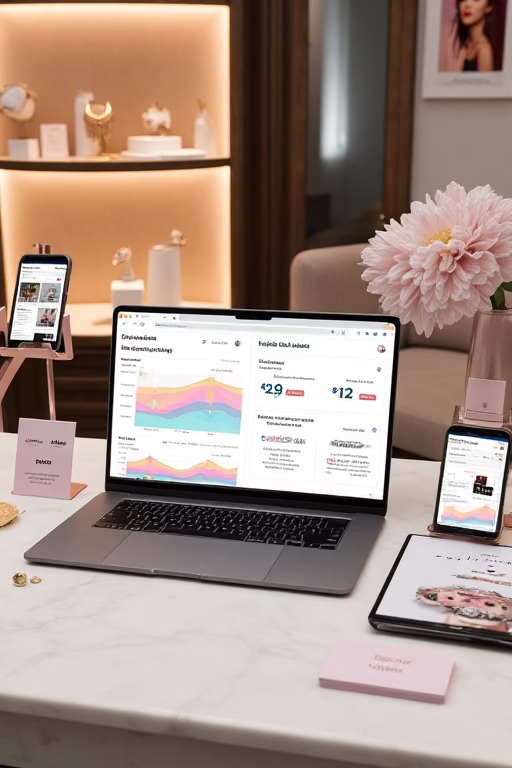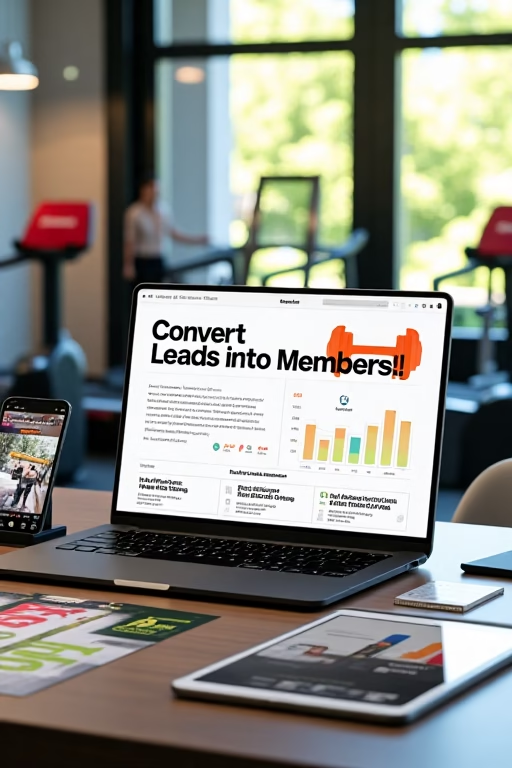How to Sell More Restaurant Meals: Social Media & Online Ordering
How to Sell More Restaurant Meals: Social Media & Online Ordering
Your Growth Playbook by Market Wiz
Table of Contents
- Introduction: Dining in the Digital Age
- 1. Understanding Modern Diners
- 1.1 Demographic & Psychographic Insights
- 1.2 Behavioral Trends in Ordering
- 2. Crafting Irresistible Menus & Offers
- 3. Leveraging Social Media Platforms
- 3.1 Instagram Visual Storytelling
- 3.2 TikTok Reels & Challenges
- 3.3 Facebook & WhatsApp Ordering
- 4. Optimizing Online Ordering Platforms
- 4.1 Website & App UX Best Practices
- 4.2 Third-Party Delivery Integration
- 4.3 Direct-Order Incentives
- 5. Email & SMS Marketing
- 6. Loyalty Programs & Subscriptions
- 7. User-Generated Content & Reviews
- 8. Analytics & Continuous Improvement
- Conclusion & Next Steps
- 25 FAQs
- 25 Extra Keywords
Introduction: Dining in the Digital Age
Gone are the days when diners only reviewed menus in print or asked friends for recommendations. Today’s restaurant-goers discover new eateries on Instagram Stories, order via mobile apps at midnight cravings, and trust peer reviews on Facebook more than glossy ads. To capture this digital-first audience, restaurants must blend mouthwatering social content with a seamless online ordering experience. In this guide, Market Wiz lays out step-by-step tactics to amplify your reach, convert clicks into orders, and foster loyalty.
1. Understanding Modern Diners
1.1 Demographic & Psychographic Insights
Today’s diners span Gen Z foodies hunting Instagrammable dishes, Millennials seeking convenience, and Gen X craving quality ingredients. Dive into your analytics to segment by age, location, and dining preferences. Use surveys or quick in-app polls to uncover motivations—health, indulgence, social experiences—to tailor your messaging.
1.2 Behavioral Trends in Ordering
Off-premise orders now account for over 60% of restaurant meals. Data shows peak online ordering between 7–9PM, with a growing lunchtime delivery surge among remote workers. Capitalize on micro-moments by scheduling targeted ads and push notifications around these high-demand windows.
2. Crafting Irresistible Menus & Offers
Your digital menu should mirror the sensory appeal of in-person dining. Use descriptive dish names, high-resolution photos, and suggestive selling (“Add garlic bread for \$3”). Introduce limited-time specials and bundle deals—“Family Feast: 4 Entrees + 2 Sides + 4 Drinks”—to boost average order value. Use heatmaps to identify top-clicked dishes and rotate offers accordingly.
4. Optimizing Online Ordering Platforms
4.1 Website & App UX Best Practices
Streamline checkout with one-page ordering, guest checkout, and saved preferences for repeat customers. Implement upsell prompts—“Would you like extra sauce?”—and display clear delivery fee breakdowns. A/B test button placement and color to maximize conversions.
4.2 Third-Party Delivery Integration
While third-party apps expand reach, commission fees can cut margins. Negotiate reduced rates for high-volume orders or offer exclusive in-app promos (“10% off on our app only”) to drive direct orders to your own platform.
4.3 Direct-Order Incentives
Create a loyalty program that rewards direct orders with points or free menu items. Offer “first-order” coupons via social media and email, and display a live countdown timer for limited-time discounts to instill urgency.
5. Email & SMS Marketing
Build segmented lists—weekend brunch fans, spice-lovers, vegan diners—and send tailored promotions. Automate abandoned-cart reminders within 30 minutes, offering a small incentive (“Use code EAT10 to save 10%”). Use SMS alerts for flash deals and order status updates to keep customers engaged and informed.
6. Loyalty Programs & Subscriptions
Launch a tiered membership—Silver (every 5th meal free), Gold (+ free drink), Platinum (+ exclusive menu previews). Consider meal-subscription models (“Chef’s Choice Weekly Box”) to secure predictable revenue and deepen customer relationships.
7. User-Generated Content & Reviews
Encourage diners to share meal photos with a branded hashtag for a chance to win a free dinner. Feature top posts on your social channels and website. Solicit Google and Yelp reviews after deliveries, offering a discount on the next order to boost ratings and local SEO.
8. Analytics & Continuous Improvement
- Track funnel metrics: page views → add-to-cart → checkout → order completion.
- Monitor social ad ROAS by campaign and platform; reallocate budget monthly to top performers.
- Survey repeat customers quarterly for NPS and feedback—iterate menu and UX based on insights.
Conclusion & Next Steps
Selling more restaurant meals demands a seamless blend of enticing social content and frictionless online ordering. Start by auditing your current social profiles, refining your menu presentation, and launching a pilot Instagram ad. Then optimize your website’s checkout flow and trial a loyalty program. With data-driven tweaks and consistent execution, you’ll turn scrolls into orders and first-timers into loyal regulars.
25 Frequently Asked Questions
1. Which platform drives the most food orders?
Instagram and Facebook typically lead for direct orders via social channels, while TikTok excels at brand awareness.
2. How often should I post on social media?
Aim for 3–5 Instagram posts per week, daily Stories, and 2–3 TikToks weekly for optimal engagement.
3. What’s the ideal menu size for online ordering?
Offer 20–30 core items, plus rotating specials, to simplify decision-making and reduce kitchen complexity.
4. How can I reduce cart abandonment?
Use guest checkout, show clear fees upfront, and trigger a cart reminder email within 30 minutes.
5. Should I allow customization?
Yes—permit add-ons and special instructions, but cap options to avoid overwhelming customers.
6. What ordering platforms should I use?
Combine your own website/app with one major third-party (UberEats, DoorDash) to balance reach and margins.
7. How to measure ad performance?
Track Cost Per Acquisition (CPA), Return on Ad Spend (ROAS), and incremental online orders by campaign.
8. Are influencer campaigns effective?
Local micro-influencers (10k–50k followers) often deliver higher engagement and authentic endorsements at lower cost.
9. How to handle negative reviews?
Respond promptly with empathy, offer to make it right, and follow up after resolution to show care.
10. What loyalty incentives work best?
Free items after 5–10 orders, birthday rewards, and member-only menu previews drive repeat business.
11. How do I track repeat customers?
Use CRM or POS data to identify repeat orderers and personalize outreach with tailored offers.
12. Should I offer subscription meals?
Subscription boxes or weekly meal plans foster loyalty and predictable revenue if your kitchen capacity allows.
13. How to integrate WhatsApp ordering?
Set up WhatsApp Business, add menu quick-reply buttons, and promote your number on social and website.
14. What’s the best way to collect UGC?
Run hashtag contests, incentivize posts with discounts, and feature customer photos on your channels.
15. How do I optimize for mobile users?
Ensure responsive design, thumb-friendly buttons, and one-click ordering on both site and app.
16. Should I use chatbots?
Chatbots can handle FAQs, reservation bookings, and order tracking—freeing staff for higher-value tasks.
17. How often to refresh specials?
Rotate weekly or bi-weekly to maintain interest and test new offerings with minimal menu disruption.
18. How to promote off-peak orders?
Offer “Happy Hour” discounts on delivery or pickup during slower periods, advertised via SMS and social.
19. What metrics matter most?
Online order volume, average order value, repeat rate, and customer acquisition cost are key KPIs.
20. How can I reduce delivery times?
Optimize kitchen workflows, allocate dedicated drivers, and set realistic delivery time windows.
21. Should I offer contactless pickup?
Yes—contactless curbside pickup appeals to safety-conscious diners and speeds up service.
22. How to handle out-of-stock items?
Provide real-time inventory updates and suggest similar alternatives at checkout.
23. Can I integrate voice ordering?
Yes—use Alexa or Google Assistant integrations for hands-free ordering experiences.
24. How to gather post-order feedback?
Send automated surveys via email/SMS 24 hours after delivery, offering a small future discount for completion.
25. What’s the first step?
Audit your current social and ordering analytics this week, then implement one high-impact tactic—like Instagram Stories Polls—to start gathering audience insights.
25 Extra Keywords
- restaurant social media tips
- online food ordering UX
- Instagram food marketing
- TikTok restaurant trends
- Facebook order button setup
- WhatsApp food ordering
- SMS marketing for restaurants
- restaurant loyalty program ideas
- meal subscription service
- abandoned cart restaurant
- food delivery integrations
- UGC food photos
- restaurant analytics tools
- menu upsell strategies
- social proof restaurant
- influencer food campaigns
- email drip food orders
- push notifications dining
- curbside pickup setup
- voice ordering integration
- mobile-first ordering
- happy hour promotions
- holiday meal bundles
- restaurant search ads
- Market Wiz restaurant guide
How to Sell More Restaurant Meals: Social Media & Online Ordering Read More »








3. Leveraging Social Media Platforms
3.1 Instagram Visual Storytelling
Showcase behind-the-scenes kitchen prep, chef spotlights, and droolworthy close-ups. Use Stories to run polls (“Which pizza topping next week?”) and Reels for 15-second recipe demos. Tag your location and menu items to drive local discovery and direct orders via link stickers.
3.2 TikTok Reels & Challenges
Join trending food challenges or create branded dance hooks featuring your signature dish. Partner with local TikTok creators for duets—your restaurant’s take on a viral recipe—amplifying reach among Gen Z audiences who crave authenticity.
3.3 Facebook & WhatsApp Ordering
Enable Facebook’s “Order Food” button and integrate WhatsApp Business for quick, conversational ordering. Use targeted ad campaigns to reach lookalike audiences based on your loyal diners’ profiles, offering first-time order discounts to entice trial.